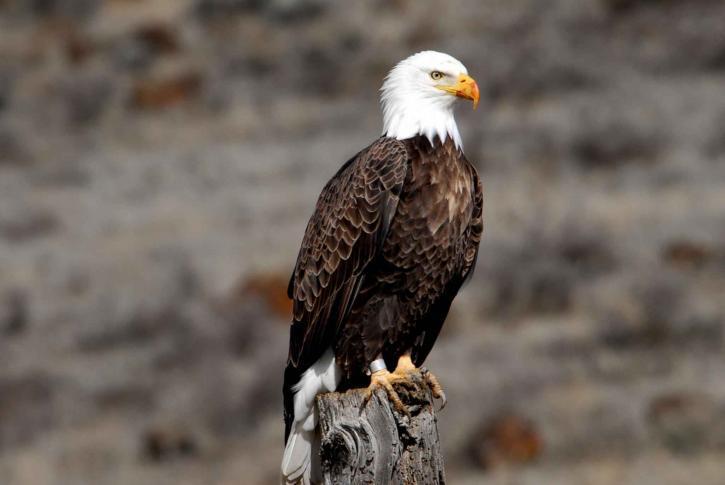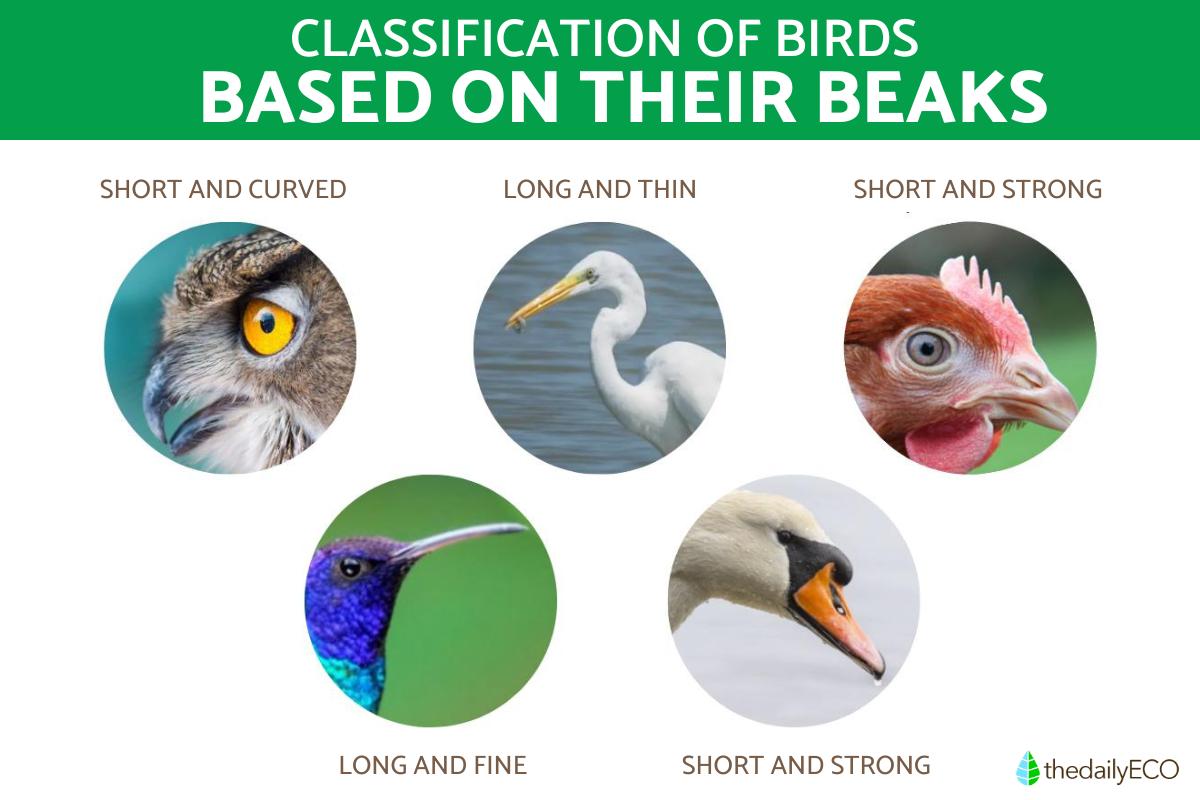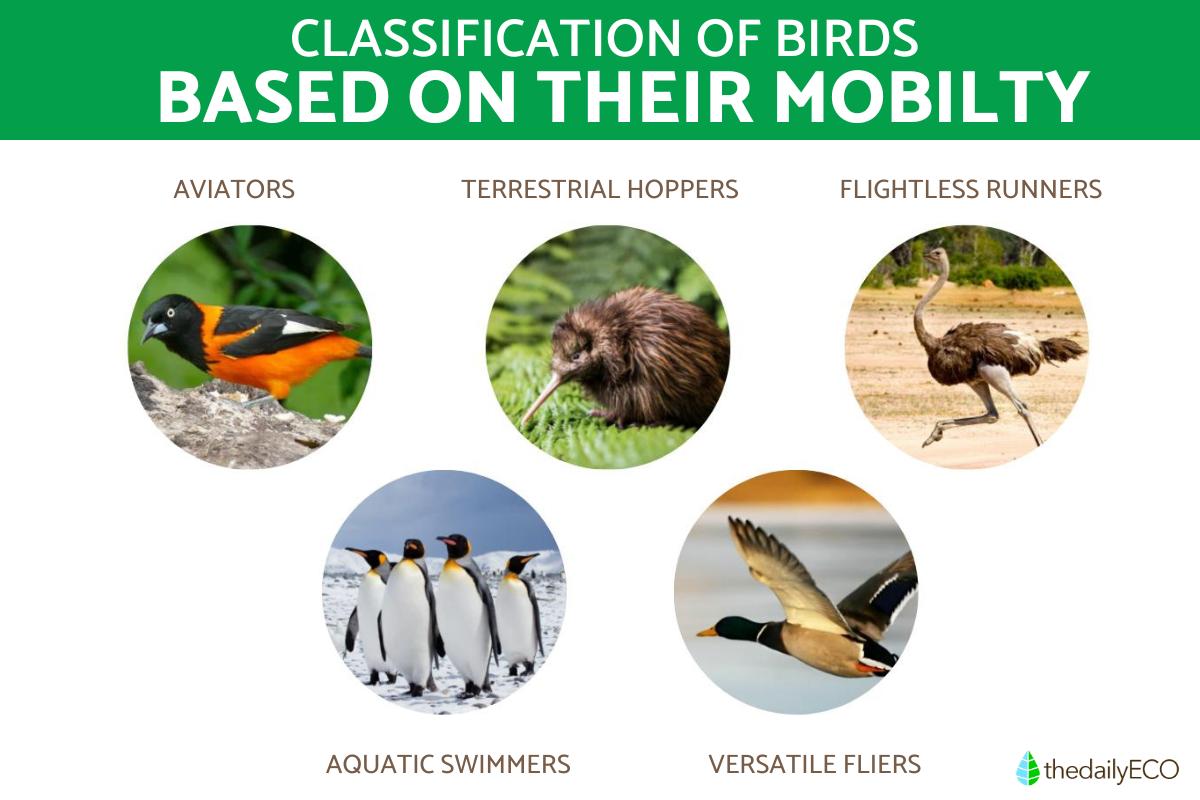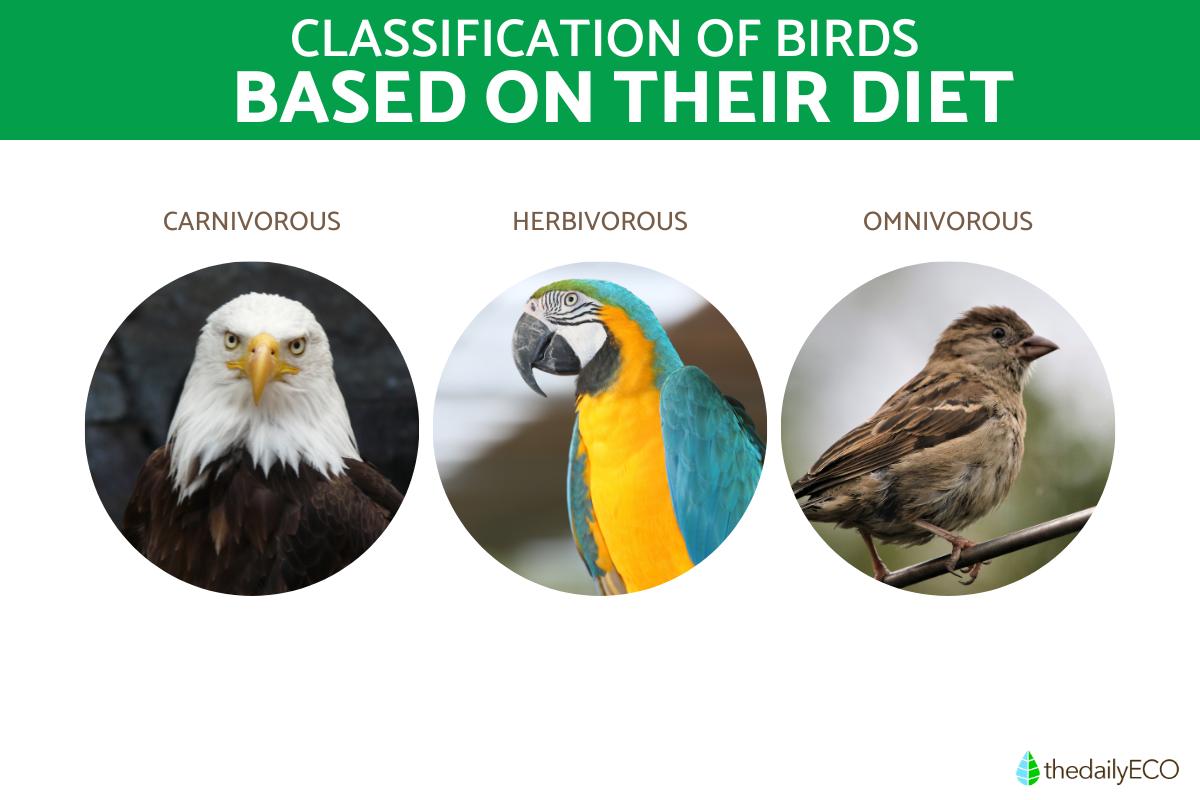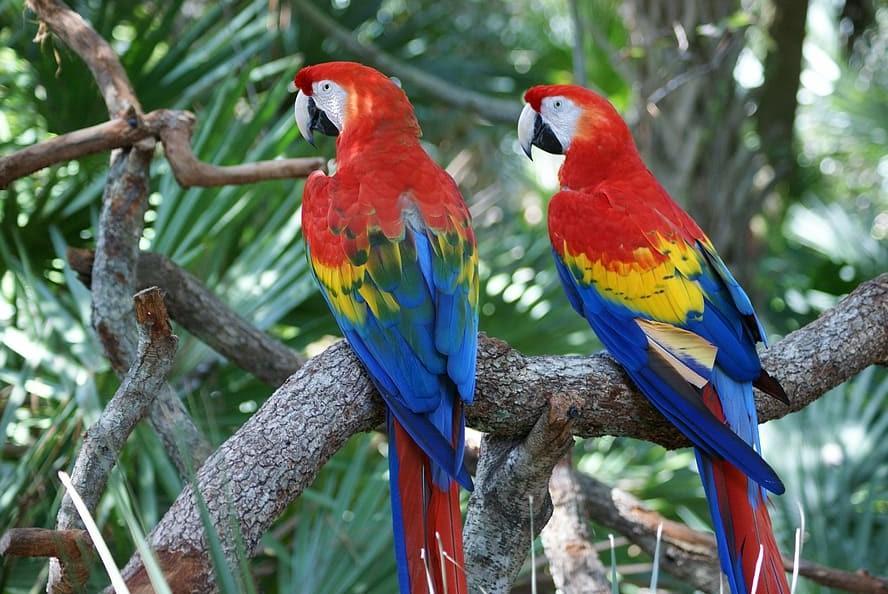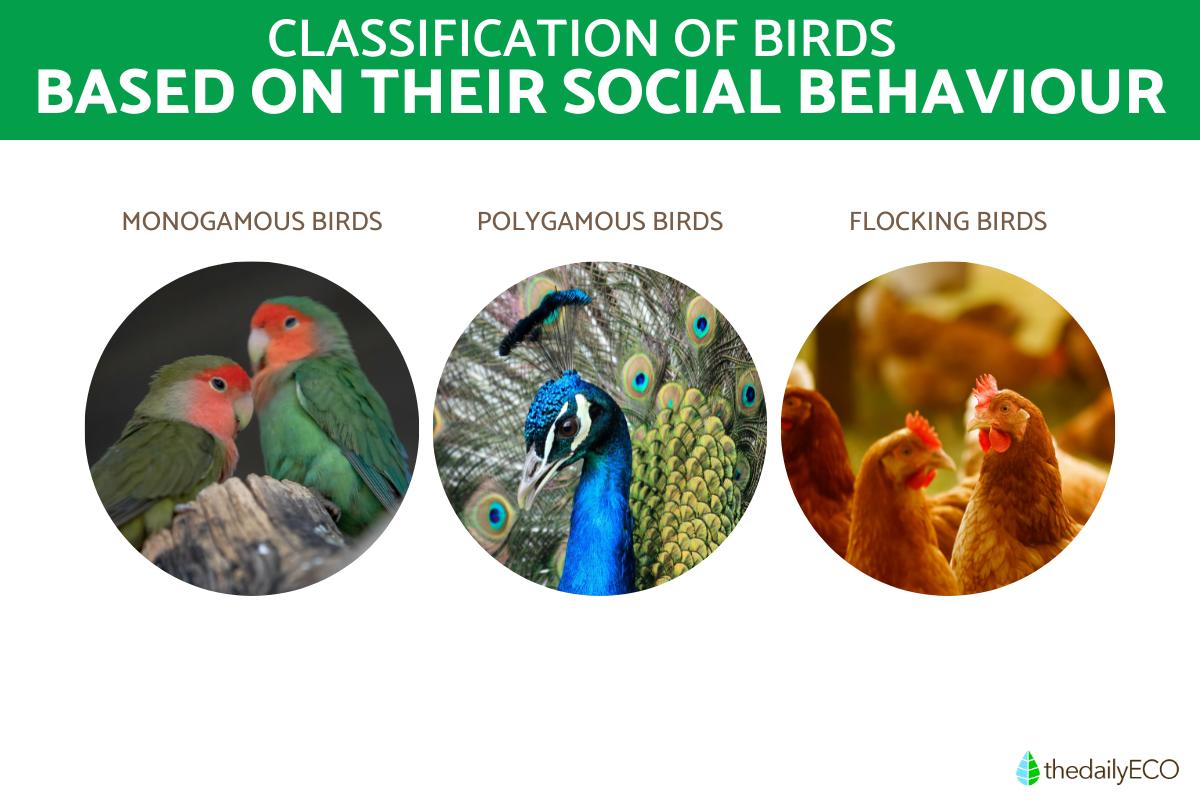How Are Birds Classified?


Birds, fascinating creatures that grace the skies and inhabit various corners of the world, captivate us with their diversity, behaviors, and unique adaptations. As denizens of the air, land, and water, birds have evolved to thrive in diverse environments, leading to a rich array of classifications based on their physical attributes, habits, and interactions.
In this upcoming article by thedailyECO, we will explore the classification of birds based on different criteria, including their social behavior, physical characteristics, and more.
- General unique characteristics of birds
- Classification of birds based on their order
- Classification of birds according to their physical characteristics
- Classification of birds based on their mobility
- Classification of birds based on their diet
- Classification of birds based on their habitat
- Classification of birds based on their social behavior
General unique characteristics of birds
Birds, regardless of their order and genus, exhibit a set of distinct characteristics that define their nature and place them in the class of animals within the kingdom Animalia, the phylum Chordata, and the subphylum Vertebrata. Some of these are:
- Birds are vertebrates, possessing a backbone and spinal column.
- Birds are warm-blooded organisms, meaning they can regulate their body temperature independently of their surroundings.
- Birds have bodies that are almost completely covered in feathers, which provide insulation, aid in flight, and serve various other functions.
- Birds have beaks that lack teeth. They use their beaks for various tasks such as feeding, preening, and nest building.
- While not all bird species can fly, they all possess wings. These modified front limbs enable birds to fly or glide through the air.
- Birds have hollow bones that are lightweight yet strong, providing the necessary structural support for flight.
- Birds possess a four-chambered heart, allowing for efficient circulation and oxygenation of their high metabolic rate.
- Birds reproduce by laying eggs. They are oviparous, meaning their embryos develop outside the mother's body within the protective structure of an egg.
- Bird feet are covered in scales, which provide traction and protection. The number of toes can vary, but most species have four toes, often arranged in different patterns.
- Many bird species exhibit monogamy during one or more breeding seasons, forming pair bonds with a single mate.
It's important to note that while these characteristics are shared by all birds, there can still be variations and adaptations within different bird species.
The classification of birds can be approached from multiple perspectives. Taxonomy, anatomy, locomotion, feeding habits, habitat, and even their interactions with other bird species and humans offer valuable insights into their diverse nature. By exploring these various dimensions, we gain a deeper understanding of the incredible world of birds.
Classification of birds based on their order
The classification of birds relies heavily on their respective orders, which serve as essential tools for effective categorization and understanding. There are numerous orders within the avian world, each representing distinct groups of species. Here, we will explore some of the most prominent and representative bird orders, shedding light on their characteristics and notable members.
- Passeriformes: also known as passerines or songbirds, stands out as the most species-rich order worldwide. With an estimated count of 5,700 to 6,500 species, these small, flying, and nest-dwelling birds are recognized for their melodious vocalizations. Canaries, sparrows, finches, ravens, and goldfinches are among the well-known species belonging to this order.
- Apodiformes: consists of hummingbirds, swifts, and swiftlets. This order, with approximately 450 species, showcases these tiny birds with exceptional hovering capabilities. Their diminutive legs are a distinctive feature of this group.
- Piciformes: woodpeckers, toucans, and barbets find their place within this order. Comprising an estimated range of 340 to over 450 species, these birds exhibit diverse adaptations, with many species possessing zygodactyl feet—two toes pointing forward and two backward.
- Psittaciformes: also referred to as psittacines, encompasses nearly 400 species of parrots and cockatoos. These charismatic birds inhabit tropical and temperate regions, featuring a robust, curved beak and zygodactyl feet with sharp claws. Macaws, parakeets, lovebirds, and common cockatoos are notable members of this order.
- Columbiformes: pigeons and turtle doves find their classification within this order. With approximately 350 current species, these small to medium-sized birds are herbivorous and known for their flying abilities. Additionally, the order includes a number of extinct bird species, such as the renowned dodo.
- Charadriiformes: also known as caradriformes, encompasses over 350 species that primarily inhabit and feed near water bodies. Gulls, plovers, and puffins are notable representatives of this order.
- Galliformes: also known as gallinaceous,includes nearly 300 species, such as chickens, domestic turkeys, peacocks, partridges, quails, and guacharacas. While their flying abilities are limited, sexual dimorphism is often pronounced among species.
- Anseriformes: aquatic poultry finds its place within this order which includes more than 160 species like geese, ducks, and swans. These birds are primarily herbivorous and many of them undertake seasonal migrations. Flightlessness is observed in some species within this order.
- Falconiformes: encompasses over 300 diurnal birds of prey. These birds, known for their excellent vision, possess a hooked beak and long, sharp talons. Falcons, vultures, and eagles are notable representatives of this order.
- Strigiformes: also known as strigiforms comprises over 200 species of nocturnal birds of prey, including owls and barn owls. These birds possess exceptional hearing, dense plumage, and large forward-facing eyes.
It is worth noting that the bird kingdom encompasses a vast array of orders, far beyond the ones mentioned earlier. The exact number of orders can vary due to variations in classification systems and taxonomic revisions. However, there are approximately 40 to 50 recognized orders of birds, grouping together an estimated 10,000 known species worldwide. It is important to acknowledge that ongoing scientific research and exploration may lead to the discovery of new species and potential changes in the classification of existing ones.

Classification of birds according to their physical characteristics
Birds can be classified in various ways based on their anatomical features, providing insights into their size, beak shape, foot structure, and other physical characteristics. Here are some common methods of bird classification:
Classification by size
Some authors suggest that birds measuring less than half a meter and weighing less than 2.205 pounds (ca. 1 kg)are considered small species. Examples of small birds include the yellow weaver, wild canary, and Australian parakeet. In contrast, large birds like the blue-yellow macaw, pelicans, and ostrich fall outside this size range.
Classification by beak shape
The shape and size of a bird's beak often indicate its feeding habits. Various types of beaks serve different functions:
- Short, curved hooked bills are characteristic of birds of prey and scavengers, enabling them to tear meat into small pieces. Eagles and owls possess such beaks.
- Long and thin beaks facilitate capturing fish, mollusks, and small invertebrates, common among fishing waterfowl like herons and storks.
- Short, thick, and robust beaks are well-suited for opening seeds and nuts, found in birds like bullfinches, finches, goldfinches, and chickens.
- Long, fine beaks are adapted for extracting nectar from flowers, a characteristic feature of hummingbirds.
Classification by feet
The structure of a bird's feet provides insight into its mobility and specialized abilities:
- The number of fingers on each foot can be didactyl (two fingers), tridactyl (three fingers), or tetradactyl (four fingers).
- The arrangement of the fingers can be anisodactyl, syndactyl, zygodactyl, heterodactyl, or pamprodactyl.
- Birds of prey possess sharp, downward-curving talons.
- Water birds have webbed feet for efficient swimming and foraging.
Classification by other physical characteristics
Plumage plays a significant role in determining a bird's adaptation and behavior:
- Thickness and showiness of plumage indicate adaptations to low-temperature climates (e.g., penguins) or courtship displays (e.g., peacocks).
- Sexual dimorphism, differing appearances between males and females, often serves as an indicator of courtship and mating rituals. Species like birds of paradise, pheasants, and peacocks display marked sexual dimorphism.
These classification methods help us understand the diverse characteristics and adaptations found among bird species, showcasing their remarkable variety and unique attributes.

Classification of birds based on their mobility
Birds can be classified based on their locomotion abilities, distinguishing between flightless and flighted birds, as well as their capabilities for running and swimming. Here are some examples:
- Parrots, falcons, and eagles are known for their flying abilities and are not adapted for swimming.
- Kiwis and kakapos are flightless birds that primarily move by crawling or hopping instead of flying.
- Ostriches, emus, rheas, and cassowaries are flightless ratites, characterized by their large size and running abilities.
- Penguins are flightless birds specialized for swimming, using their wings as flippers to navigate through water.
- Ducks, geese, swans, and pelicans possess the ability to fly and swim. They are adapted to both environments and exhibit characteristics suited for both modes of locomotion.
By understanding the locomotion capabilities of different bird species, we can appreciate the diverse ways in which they have adapted to their habitats and lifestyles.

Classification of birds based on their diet
Birds exhibit a diverse range of dietary preferences, including herbivorous, carnivorous, and omnivorous feeding habits.
- Herbivorous birds, such as parrots, doves, and hummingbirds, primarily consume plant-based foods. This can include a variety of plant matter, such as fruits, grains, nuts, seeds, and nectar.
- Carnivorous birds have a diet that consists mainly of meat. They can be further classified into different categories based on their hunting techniques and prey preferences. For instance, eagles, vultures, and woodpeckers are carnivorous birds that may specialize in hunting insects, fish, or small mammals. Some birds of prey, like hawks and owls, are skilled hunters that capture and feed on other birds or rodents.
- Omnivorous birds have a more diverse diet, incorporating both plant and animal matter. Species such as sparrows and flamingos have adapted to consume a wide range of food sources. They may feed on seeds, fruits, and vegetation, while also supplementing their diet with small animals like insects, frogs, fish, crustaceans, and lizards.
You might be interested in this other article, where we explain what biotic factors are.

Classification of birds based on their habitat
Birds can be classified based on their habitat and residency patterns, providing insights into their preferred living environments and behavior.
- Migratory birds, like swallows, undertake regular seasonal journeys between breeding and wintering grounds. They have adapted to long-distance flights and rely on specific habitats for breeding and foraging. You can learn more about migratory birds, including their names and photos, in the referenced post.
- Sedentary birds, such as guacharacas, are non-migratory and remain in their resident areas year-round. They establish fixed territories and do not undertake long-distance movements.
Birds can also be categorized based on the ecosystems they inhabit. Terrestrial birds, like ostriches, primarily dwell on land and are adapted to a terrestrial lifestyle.
- Aquatic birds, like penguins, are well-adapted for life in water. They have specialized adaptations for swimming, diving, and catching prey underwater. Semi-aquatic or amphibious birds, like ducks, exhibit behaviors and adaptations suitable for both water and land environments.
- Seabirds, such as gannets, spend a significant amount of time at sea, often foraging and nesting in marine environments.
- Tree-dwelling birds, like parrots, have a preference for arboreal habitats, spending a substantial amount of time in trees for feeding, nesting, and seeking shelter.
- Creeping birds, like kiwis and chickens, are flightless and spend a considerable portion of their time on the ground, utilizing their specialized adaptations for ground-dwelling behaviors.
- Urban birds, such as pigeons, magpies, sparrows, and vultures, have successfully adapted to human settlements like cities and suburbs. They utilize urban environments for nesting, foraging, and exploiting available resources.
You might be interested in this other article where we have listed which are the biggest birds in the world.

Classification of birds based on their social behavior
Birds exhibit various forms of social behavior and relationships with other birds. Understanding the social dynamics and relationships among birds provides valuable insights into their behavioral adaptations, communication, and survival strategies within their respective communities.
- Monogamy is the most common form of relationship among birds, where a pair of birds forms a long-term bond with a single partner. Examples of monogamous birds include swans and lovebirds.
- Polygamous and polygynous birds engage in multiple mating relationships, often forming harems where a male mates with multiple females. Roosters, rheas, and peacocks are examples of birds that exhibit polygamous behavior.
- Birds that prefer to live and move in large groups of their own species are known as flocking birds. Flocks provide safety, increased foraging efficiency, and social interaction. Species such as common queleas, ducks, and starlings are known to establish flocks.
Some birds exhibit social behavior where they coexist harmoniously with other bird species. Parrots, penguins, and ducks are examples of birds that can interact positively with different types of birds, fostering social cohesion and cooperative behavior.

If you want to read similar articles to How Are Birds Classified?, we recommend you visit our Biology category.
- Maria Luz Thomann. (May 18, 2020). AnimalWised . Types of bird beaks. Available at: https://www.expertoanimal.com/tipos-de-picos-de-aves-24930.html
- Iago Partial. (June 15, 2018). Zoo Portraits . Birds, their different beaks and the functions they perform. Available at: https://www.zooportraits.com/es/aves-pico-funciones-evolucion/
- Editorial of Birds of Burgos. Birds of Burgos . Available at: https://www.avesdeburgos.com/aves/clasificacion.htm
- Exotic bird web. Available at: https://avesexoticas.org
- IUCN Red List of Threatened Species. Available at: https://www.iucnredlist.org/



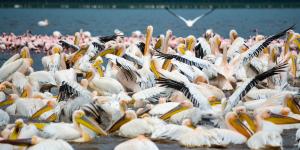


 This is helping alot
This is helping alot

